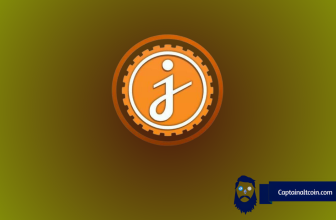
How volatile are your crypto assets? We bet you don’t like to watch your $100 holdings to soar to $200 overnight only to be worth $50 when you wake up. You’re hopefully aware of the crypto market’s invention for smoothing out this extreme volatility: stablecoins.
The stablecoin market is obviously gaining popularity. Their share of the crypto market has increased from 1% in 2018 to almost 3% today. Global stablecoin trading volume grew from $12.5 billion in 2017 to $82 billion in 2018, according to Chainalysis. 24-hour trading volume for Tether, one of the most popular stablecoins, recently exceeded Bitcoin’s. But the main signal of the market’s maturation is that new players are coming to the market with flexible, cutting-edge concepts. One of these is the EOSDT stablecoin, a product of the Equilibrium framework based on the EOS blockchain. Just three months after its launch, the framework reached more than $15 million USD collateralized in EOS.
EOSDT is a decentralized stablecoin that’s backed by digital assets and pegged to the US dollar. Unlike famous cryptocurrencies like Bitcoin and Ether, stablecoin values remain steady against an uncertain market. 1 EOSDT always equals $1 USD, and it can be fairly described as a tokenized representation of a dollar sitting in a bank.

A user generates EOSDT with the Equilibrium framework, locking up digital assets in a smart contract. Equilibrium takes those assets as 170% collateral for the EOSDT to be generated. For now this collateralization function is only compatible with EOS, but the team is working on support for generating EOSDT from a basket of varied collateral. As this service is up and running today, a user could turn $1,700 of EOS into $1,000 of EOSDT to generate some cash without paying capital gains tax.
This system also lets users hedge their predictions on when the market might decline. They can exchange some EOS for EOSDT to set their position, then cash out their USD-pegged stablecoins when their collateral assets start trading below that.
Among other names on the market, Equilibrium’s EOSDT diverges in big ways. It’s up and running on the mainnet today, it maintains the highest level of the collateral protection (including the real-time market prices monitoring available through oracles), and it offers mathematical precision within smart contracts, allowing for the market’s most effective parity mechanisms. Equilibrium also runs on EOSIO (instead of the mostly preferred Ethereum blockchain), and it offers on-chain governance.
The EOSIO technology stack has certain advantages for this kind of framework. Not only does it offer higher transaction bandwidth and lower fees, but it even lets users vote to change the parameters that drive the system, like when to liquidate a position and what fees are necessary. Users who want to participate in this voting and manage the platform’s key parameters must hold the framework’s Native Utility Token (NUT). NUT holders have the ability to vote for EOS block producers directly within the framework. Equilibrium is also pursuing the idea to involve the crypto community in shaping and designing new pegging algorithms. To that end, it recently launched its new research and development division Equilibrium Labs to work on compelling new concepts in decentralized finance.

The project expects not only to give EOS traders new functionality to deploy against the volatile crypto market, but to create fair and reliable liquidity mechanisms for the stablecoin market in cooperation with the community, opening more market opportunities for new decentralized finance businesses.






